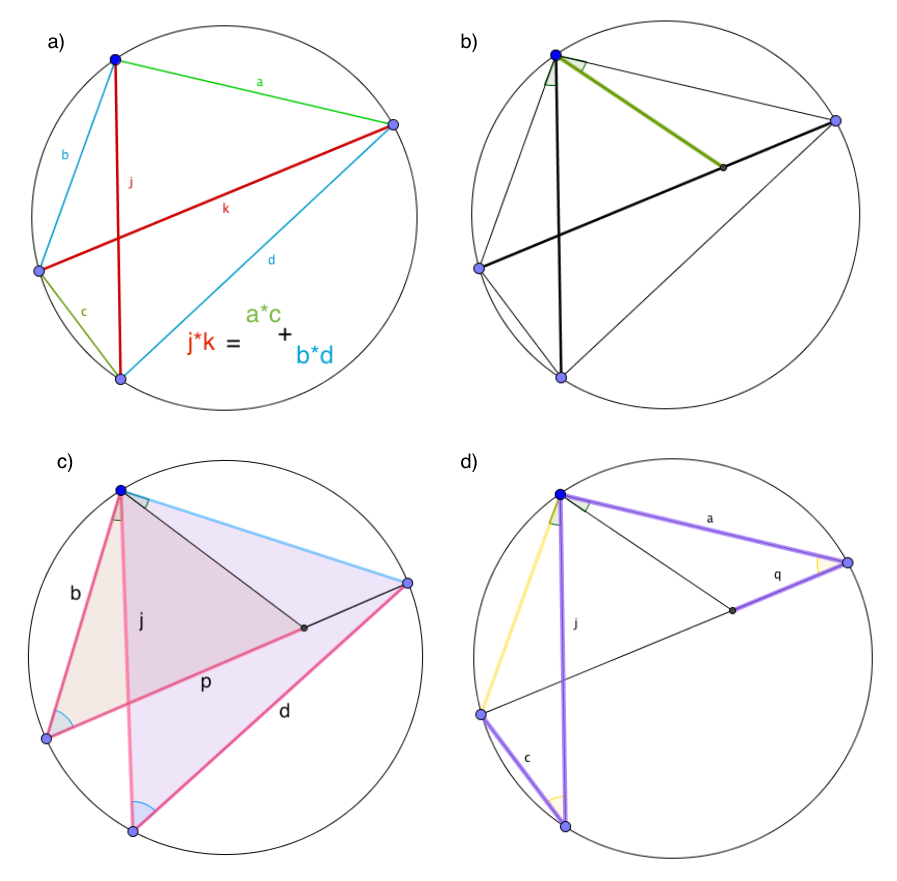Difference between revisions of "Ptolemy's Theorem"
From PiWiki
| (3 intermediate revisions by the same user not shown) | |||
| Line 1: | Line 1: | ||
[[File:Ptolemy's_Theorem.png]] | [[File:Ptolemy's_Theorem.png]] | ||
| − | + | ||
| + | The key construction step is (b), which allows us to form 2 pairs of similar triangles: | ||
| + | |||
| + | Examining the similar triangles in (c), we have <math>\frac{j}{d} = \frac{b}{p}</math>, so <math>jp = bd</math> | ||
| + | |||
| + | Examining the similar triangles in (d), we have <math>\frac{j}{c} = \frac{a}{q}</math>, so <math>jq = ac</math> | ||
| + | |||
| + | So <math>j(p+q) = bd + ac</math> ... Q.E.D. | ||
| + | |||
| + | This theorem rests upon: | ||
| + | |||
| + | [[File:InscribedAngle.gif]] | ||
Latest revision as of 17:42, 14 January 2016
The key construction step is (b), which allows us to form 2 pairs of similar triangles:
Examining the similar triangles in (c), we have  , so
, so 
Examining the similar triangles in (d), we have  , so
, so 
So  ... Q.E.D.
... Q.E.D.
This theorem rests upon:

